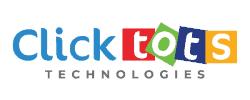Introduction
Search engine optimisation (SEO) is a set of strategies to increase website visibility and traffic on search engines such as Google. SEO involves optimising content, improving website structure, creating links from other websites, and more. Four key tactics must be employed to achieve SEO success: keyword research, on-page SEO, off-page SEO, and technical SEO.
Keyword research involves identifying keywords related to your business or industry so you can rank higher in search results. It also includes assessing the relevance and popularity of these keywords so they can be effectively targeted with content creation. On-page SEO optimises web page content by targeting specific keywords while considering factors like readability and formatting and including relevant visuals like images/videos/multimedia. Off-page SEO consists of activities such as link-building campaigns with influencers or through social media posts which will help boost your site’s ranking in SERPs (search engine result pages). Technical SEO looks at website speed performance and infrastructure optimisation issues, which can impact search rankings if overlooked.
Keyword Research
On-page SEO focuses on optimising the content of a website’s pages, emphasising targeting specific keywords. This includes using appropriate headings, keyword density and proximity, meta tags, URL optimisation, and ensuring content is easy to read and understand. It also involves incorporating visuals like images/videos/multimedia that are relevant to your site’s message to make it more engaging for readers.
Off-page SEO consists of activities such as link-building campaigns with influencers or through social media posts which will help boost your site’s ranking in SERPs (search engine result pages). Link building is integral to off-page SEO because gaining links from credible websites can increase your domain authority and page rank. This can be done by reaching out to blogs or other sites in your industry to ask if they would include a link back to you in their articles or blog posts, by creating guest blog posts on other sites, by participating actively and authentically in online conversations; or simply by sharing helpful information about topics related to your business which will naturally attract links back over time.
Finally, technical SEO looks at website speed performance and infrastructure optimisation issues, which can impact search rankings if overlooked. Technical elements such as sitemaps, robot files, use of HTTPS protocol instead of HTTP, etc., should all be considered when considering how best to optimise the overall user experience for visitors who may come across a website via organic search results.
On-Page SEO
On-page SEO also involves ensuring that your content’s structure is optimised for search engine crawlers. This includes using proper headings and subheadings, providing keyword density and proximity are appropriate, utilising meta tags to optimise further content visibility in SERPs (search engine result pages), optimising URLs for better indexing by search engines, as well as maintaining readability so users can easily understand what’s being offered on a page.
Additionally, including relevant visuals such as images/videos/multimedia into webpages can help make them more engaging and attractive to viewers. Not only does this increase user engagement, but it also gives an extra boost to organic rankings since search engines will see these elements as indicators of quality content.
In addition to optimising the content on each page, it’s essential to ensure that everything behind the scenes is appropriately configured, too – this is where technical SEO comes into play. Technical aspects such as creating sitemaps and robots files which tell search engine crawlers how they should crawl through a website, using HTTPS protocol instead of HTTP, or compressing image sizes to reduce loading times are all essential parts of technical SEO that must be taken into account when trying to get websites higher up in SERPs (Search Engine Result Pages).
Off-Page SEO
Link building is an integral part of off-page SEO. Gaining links from credible websites can increase your domain authority and page rank. This can be done by reaching out to blogs or other sites in your industry to ask if they would include a link back to you in their articles or blog posts, by creating guest blog posts on other sites, by participating actively and authentically in online conversations; or simply by sharing helpful information about topics related to your business which will naturally attract links over time.
Social media campaigns are another effective way of driving traffic and increasing visibility for a website. Creating shareable content such as infographics, videos, and images that people can “like” and comment on allows businesses to reach new audiences while engaging existing ones. Additionally, paid advertising options like boosted Facebook posts, Twitter ads, Instagram sponsored stories, etc., are great ways of quickly getting more eyes onto one’s website – especially when targeting specific demographics with tailored content messages.
Finally, influencer marketing is an excellent way of leveraging the power of influential people within a particular field/industry who have already built up trust among their followers. So it’s well worth considering working with them depending on budget constraints. Collaborating with influencers helps boost awareness and leads potential customers directly back to the primary source (i. e the product/service being marketed).
Technical SEO
Technical SEO focuses on optimising the technical aspects of a website to improve its visibility and ranking on search engine result pages (SERPs). Improving page load speed is an important part of this process. It can be achieved by reducing HTTP requests, enabling compression, leveraging browser caching, minifying HTML and JavaScript files, etc. Optimising site structure also improves SERP rankings since it ensures that all webpages are correctly indexed and crawled by search engines – making sure they’re organised into categories/subcategories with clear headings helps significantly with this. Infrastructure optimisation involves monitoring server performance and checking for any errors or broken links that might prevent crawlers from accessing content efficiently and accurately. Additionally, implementing redirects when necessary will help ensure visitors land on the correct page, even if URLs change over time. All these elements must be considered to ensure maximum visibility for your website’s content within SERPs.
Conclusion
In conclusion, SEO is an important part of any online strategy as it helps increase website visibility within organic search engine results. It involves optimising both on-page and off-page elements such as content, technical infrastructure, link-building campaigns with influencers or through social media posts, etc., to improve the overall user experience for visitors who may come across a website via organic search results.
When implementing SEO practices successfully, regularly track analytics data, which will help inform decision-making and show progress made over time. Additionally, ensure that all aspects of your site are optimised, including page speed performance as well as structure/infrastructure; use relevant visuals like images/videos/multimedia where appropriate; involve influencers when possible; and be consistent in updating content so that it’s kept fresh – all these steps will go a long way towards improving the overall ranking of your website in SERPs (search engine result pages).




